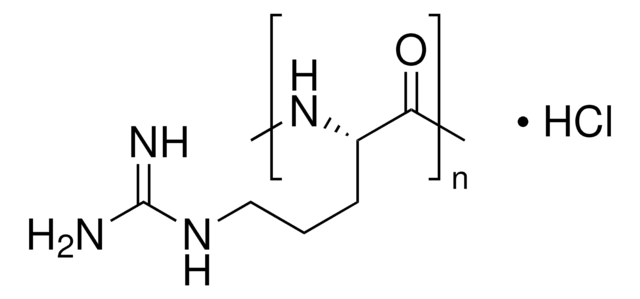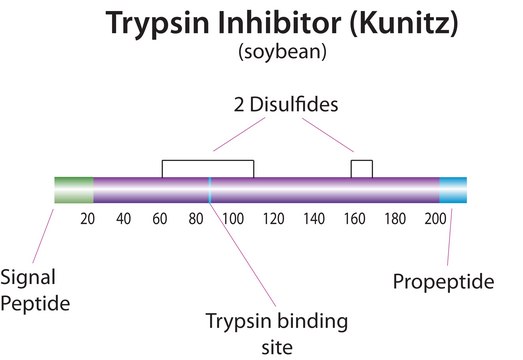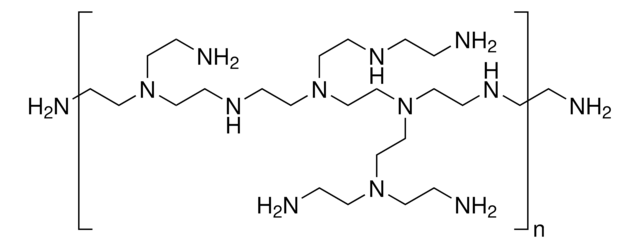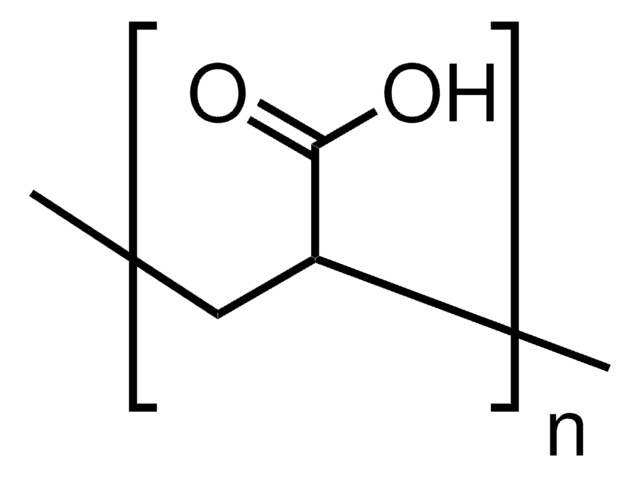76492
10,12-Pentacosadiynoic acid
≥97% (HPLC)
Synonym(s):
PCDA
Sign Into View Organizational & Contract Pricing
All Photos(1)
About This Item
Empirical Formula (Hill Notation):
C25H42O2
CAS Number:
Molecular Weight:
374.60
Beilstein:
4189973
MDL number:
UNSPSC Code:
12352100
PubChem Substance ID:
NACRES:
NA.22
Recommended Products
Quality Level
Assay
≥97% (HPLC)
form
crystals
functional group
carboxylic acid
SMILES string
CCCCCCCCCCCCC#CC#CCCCCCCCCC(O)=O
InChI
1S/C25H42O2/c1-2-3-4-5-6-7-8-9-10-11-12-13-14-15-16-17-18-19-20-21-22-23-24-25(26)27/h2-12,17-24H2,1H3,(H,26,27)
InChI key
ZPUDRBWHCWYMQS-UHFFFAOYSA-N
Related Categories
Application
10,12-Pentacosadiynoic acid (PCDA) is an amphiphilic diacetylene that can be used:
- In combination with a semifluorinated tetracosane ((CF3(CF2)7(CH2)15CH3) to synthesize mixed monolayer by photopolymerization.
- For the conversion of hydrophobic upconverting nanoparticles (UCNPs) to hydrophilic.
- To synthesize a polymer by combining with pyridine-2-aldoxime for colorimetric detection of malathion.
- To synthesize a thermochromic sensor constituting polymer fibres with monomeric unit of two PCDA linked by a p-phenylene group (bis-PCDA-Ph).
- As an inert coating material upon self-assembly and photopolymerization to modify the surface of Fe3O4 nanoparticles.
Signal Word
Warning
Hazard Statements
Precautionary Statements
Hazard Classifications
Eye Irrit. 2 - Skin Irrit. 2 - STOT SE 3
Target Organs
Respiratory system
Storage Class Code
11 - Combustible Solids
WGK
WGK 3
Flash Point(F)
Not applicable
Flash Point(C)
Not applicable
Personal Protective Equipment
dust mask type N95 (US), Eyeshields, Gloves
Choose from one of the most recent versions:
Already Own This Product?
Find documentation for the products that you have recently purchased in the Document Library.
Seokho Kim et al.
Polymers, 12(3) (2020-03-14)
We experimentally demonstrate the simultaneous enhancement of Raman and photoluminescence (PL) of core-shell hybrid nanoparticles consisting of Ag (core) and polydiacetylene (PDA, shell) through the assistance of localized surface plasmon (LSP) effect for the effective biosensor. Core-shell nanoparticles (NPs) are
Thanh Chung Pham et al.
ACS omega, 5(48), 31254-31261 (2020-12-17)
We prepared the monomer PCDA-HP composed of 5-hydroxy-N 1,N 3-bis(pyridin-2-ylmethyl)isophthalamide (HP) as a cadmium ion tweezer and then polymerized them to form a polydiacetylene (PDA)-based sensor (PDA-HP), which displayed selective and sensitive colorimetric and fluorometric change upon addition of a
One and a half layers? Mixed Langmuir monolayer of 10, 12-pentacosadiynoic acid and a semifluorinated tetracosane.
Wang S, et al.
Langmuir, 16(6), 2882-2886 (2000)
Jung Lee et al.
Nature communications, 4, 2461-2461 (2013-09-13)
As they have been designed to undergo colorimetric changes that are dependent on the polarity of solvents, the majority of conventional solvatochromic molecule based sensor systems inevitably display broad overlaps in their absorption and emission bands. As a result, colorimetric
Wenjie Dong et al.
International journal of nanomedicine, 8, 221-232 (2013-02-14)
In this study, we immobilized polydiacetylene vesicles (PDAVs) onto the surface of polystyrene (PS) microspheres (1 μm in diameter) by using both electrical charge and conjugated forces to form a reinforced composite structure. These reinforced complexes could be easily washed
Our team of scientists has experience in all areas of research including Life Science, Material Science, Chemical Synthesis, Chromatography, Analytical and many others.
Contact Technical Service


![23:2 Diyne PC [DC(8,9)PC] Avanti Research™ - A Croda Brand 870016P, powder](/deepweb/assets/sigmaaldrich/product/structures/284/664/e58cb25d-e85d-46ca-80f2-870cae07c7f5/640/e58cb25d-e85d-46ca-80f2-870cae07c7f5.png)





